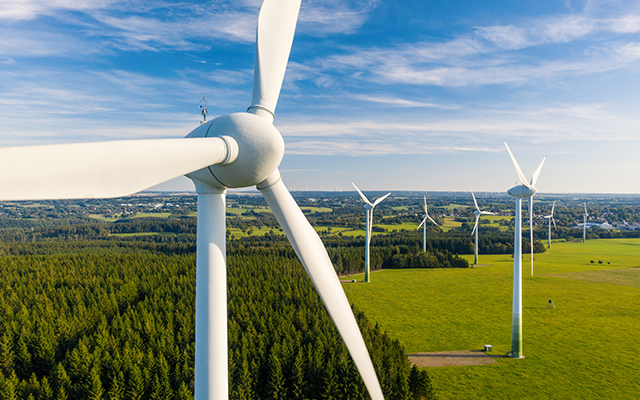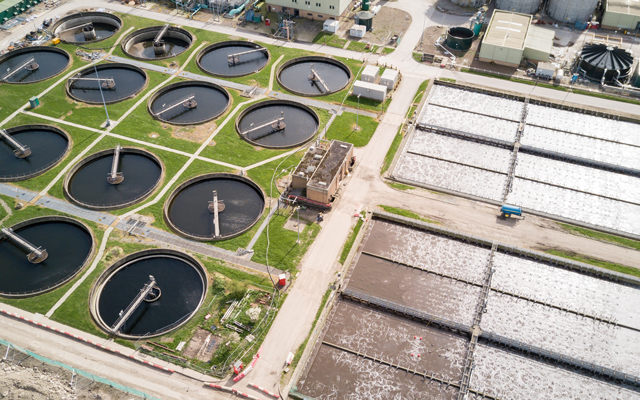What is LoRaWAN?
Long Range Wide Area Network (LoRaWAN) is an open networking protocol that enables devices to communicate using a type of proprietary wireless technology known as Long Range (LoRa). Designed for large-scale IoT projects, LoRaWAN is particularly useful for low-power devices that require very little bandwidth.
Discover more about LoRaWAN, the practicalities of deployment, and the potential viability of this networking model for your IoT initiatives.
What is LoRaWAN?
A LoRaWAN network consists of four main components:
End Nodes: these are all the individual devices that make up the network (e.g. sensors, monitors and trackers).
Gateways: these act as a bridge between the end nodes and the rest of the network. Gateways collect end node data and transmit this data to the network server. Whereas end node/gateway communication is via LoRaWAN, those gateways communicate with the network server through higher bandwidth protocols (e.g. WiFi, Ethernet, or Cellular).
Network Server: this consolidates data from the gateways before uploading it to the application server.
Application Server: where the consolidated data is ultimately processed and displayed.
The end nodes transmit data to the gateways using LoRa transmitters via an unlicensed ISM (Industrial, Scientific, Medical) radio band. To intercept this information, gateways are equipped with LoRa concentrators.
End nodes and gateways are organised into what is known as a star-on-star network. This means that when an end node transmits its data, the information is received and collected by all gateways in range. The gateways then forward this data to the network server. This network server then deduplicates the data.
The model allows for bi-directional communication between the application server and end nodes. This includes the ability to multicast messages to some or all of your devices. It means you can carry out software upgrades and issue instructions to devices remotely.

LoRaWAN vs LoRa

These two terms are sometimes used interchangeably. However, they relate to slightly different technologies. LoRa is a specific type of technology that enables devices to use the license-free wireless spectrum to communicate. LoRaWAN is a protocol that sits on top of LoRa to create a network.
LoRa is a proprietary technology belonging to a semiconductor supplier, Semtech. In a LoRaWAN network setup, all end-node devices and network gateways incorporate LoRa transceiver chips.
LoRaWAN is an open-source cloud-based protocol designed and overseen by the LoRa Alliance. The protocol sets out a standardised model for wide-area networks using LoRa wireless technology, including standardised node authentication and data encryption.
What are the advantages of LoRaWan?
Coverage
LoRaWAN uses sub-1GHz frequencies and a very narrow frequency band. This offers very strong indoor penetration and makes LoRaWAN highly effective at overcoming physical barriers. It’s a good option for deploying sensors and monitors in difficult-to-reach areas, such as transport and utility tunnels, enclosed parts of buildings, as well as for sub-soil monitoring in agriculture.
LoRaWAN enables wireless transmission of up to 15km, while also being able to penetrate dense urban or deep indoor environments.
Power usage
Transmitting or receiving information via LoRa requires just a tiny amount of current. This makes LoRaWAN a good option for businesses that want to take a ‘fit and forget’ approach to device management. Energy usage for networked devices is minimal, so batteries can last for many years.
Operating costs
With cellular-based IoT connectivity, you pay for the privilege of using the carrier’s network. By contrast, LoRaWAN uses unlicensed frequencies, so you don’t pay for data usage unless you are using services from a LoRaWAN infrastructure provider who may charge you.
What’s more, because LoRaWAN facilitates bi-directional communications, you can update device firmware over-the-air, thereby reducing the costs and logistical challenges of device management.

What are the disadvantages of LoRaWAN?
Infrastructure
While the LoRaWAN model eliminates carrier data charges, the downside of this is that you are responsible for developing, configuring and securing your network. Thanks to the standardised LoRaWAN protocol, there are plenty of vendors offering the components you need for this. However, it can involve a considerable financial outlay.
Global deployment
With cellular IoT, if you want to branch out into a different geographic location, it’s usually just a matter of engaging with an IoT MVNO like Wireless Logic or else finding a suitable local carrier and carrying your model over to their infrastructure. With LoRaWAN, it isn’t always this simple. There may be an existing LoRaWAN service provider you can partner with. If not, it’s a case of having to build your own infrastructure.
Communication restrictions
LoRaWAN can be ideal for obtaining small amounts of data from devices deployed in the wild. Also, as we’ve seen, LoRaWAN can also be used to actually transmit messages to those devices.
However, too much communication can lead to frequencies becoming overcrowded. And in fact, LoRaWAN service providers set limits on the number of messages that can be sent per day. If too many devices attempt to communicate at once on a network, it can lead to interference and error. At busy times, Packet Error Rates (PERs) can be as high as 50%. For critical applications where packet accuracy is a top priority, LoRaWAN may not be a viable option.
Find out more
For an expert assessment of your connectivity needs and to discover the best fit M2M options for your business, speak to Wireless Logic today.
To discover more about the Low Power Wide Area Network options available to your business and all other aspects of IoT connectivity, explore our glossary.